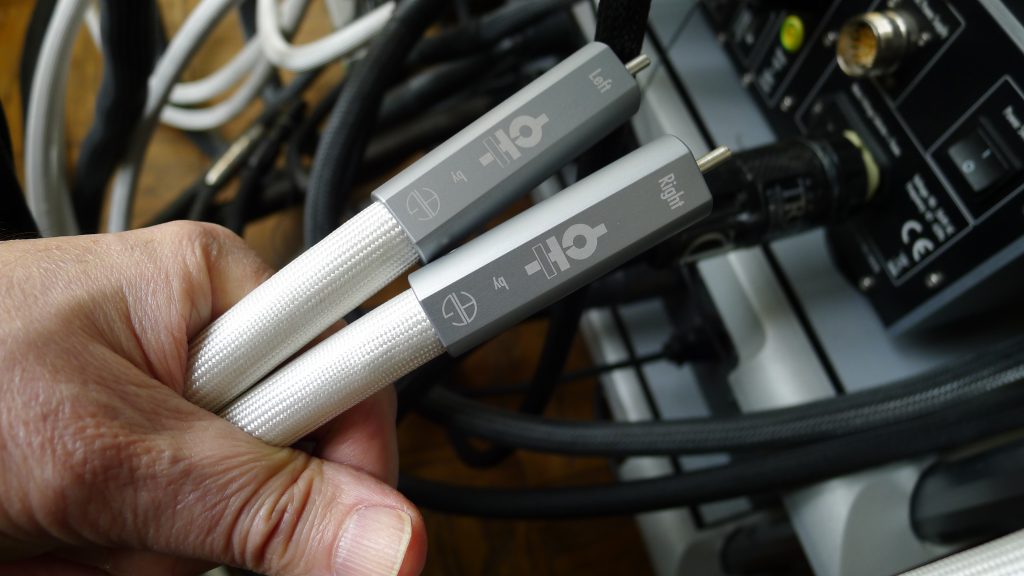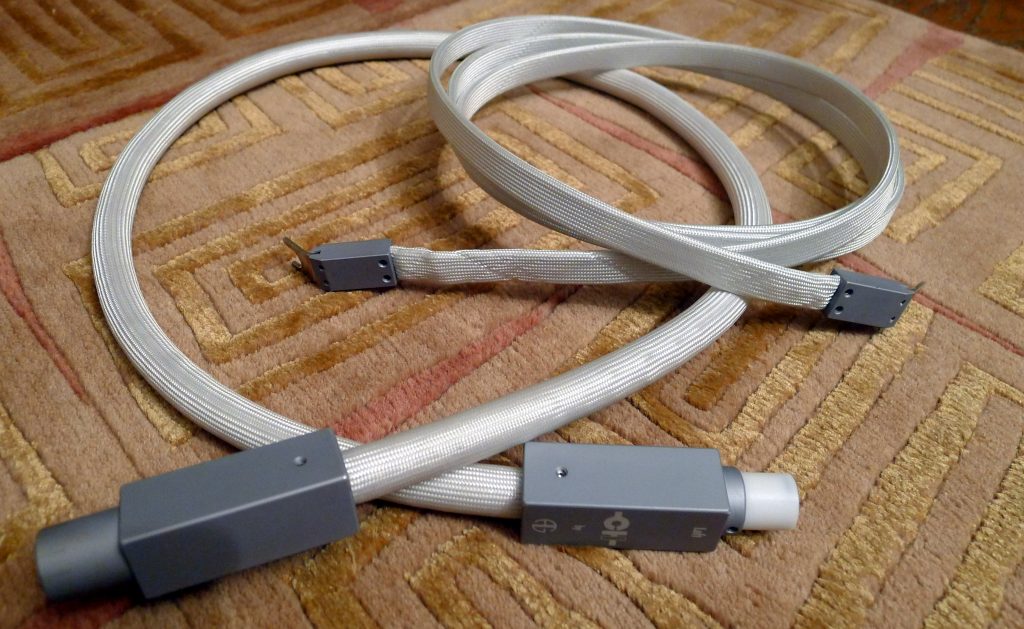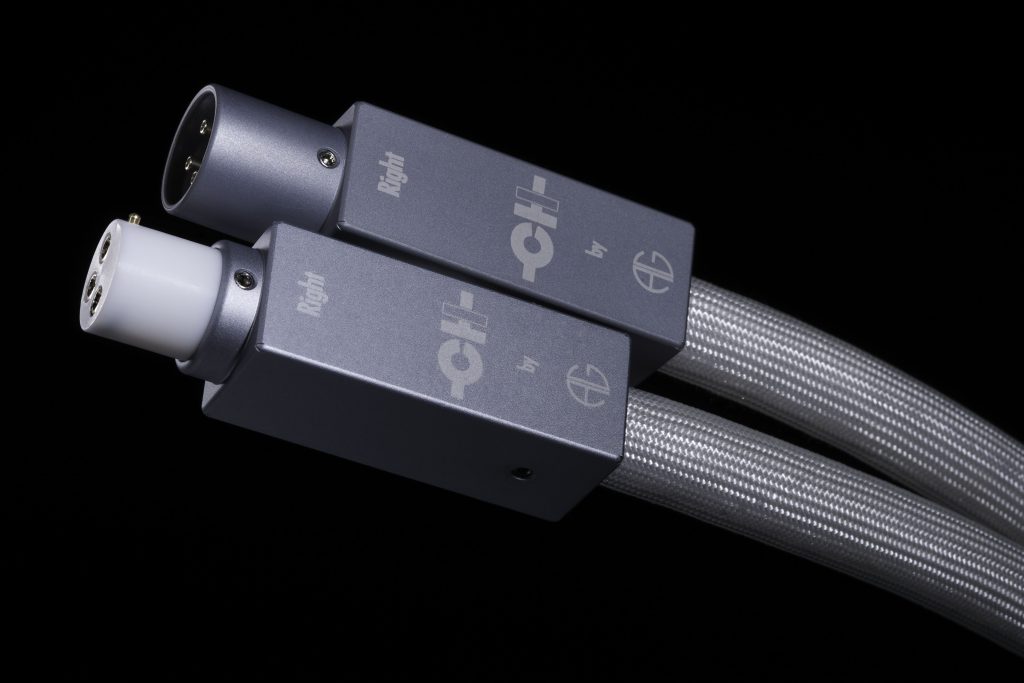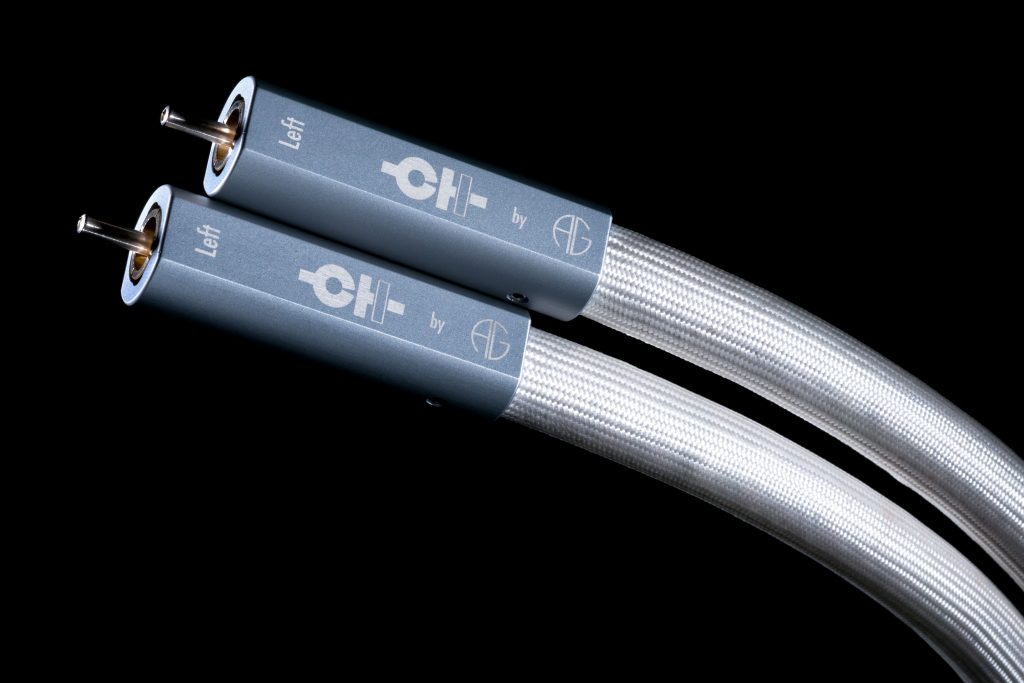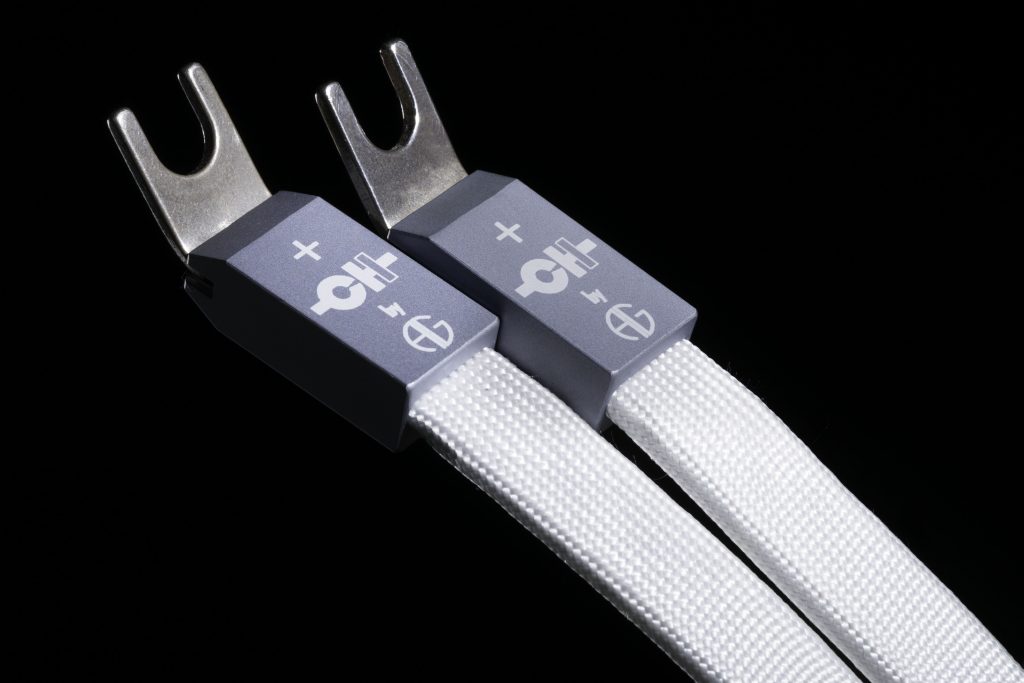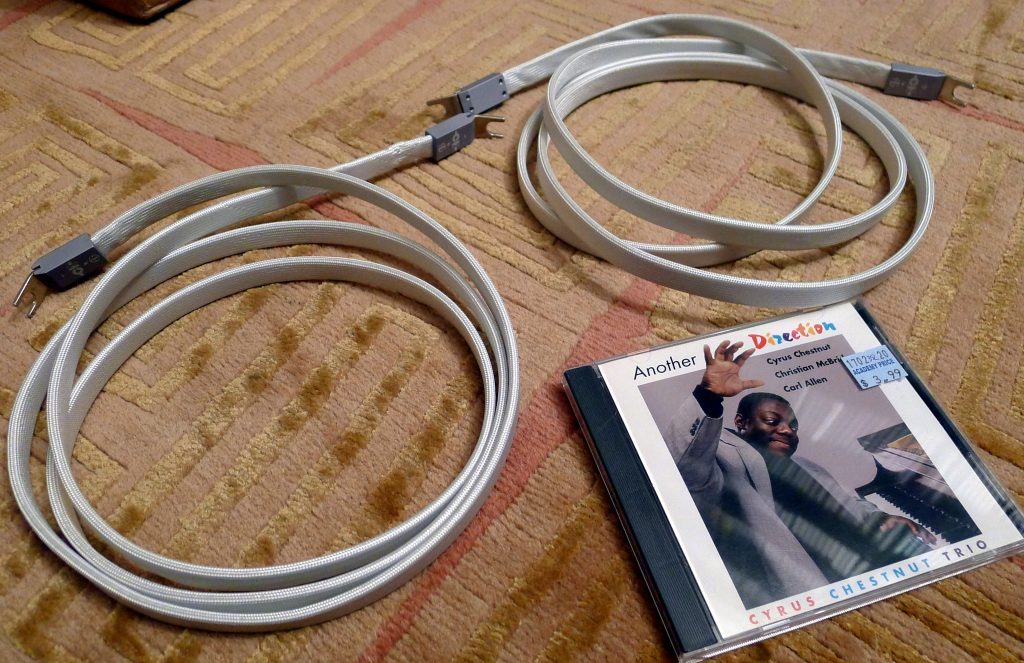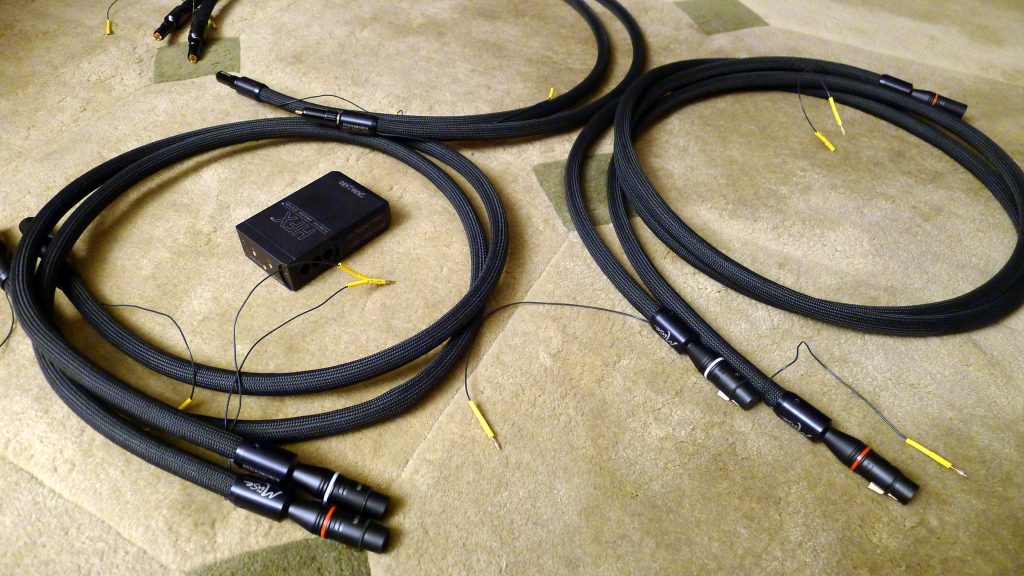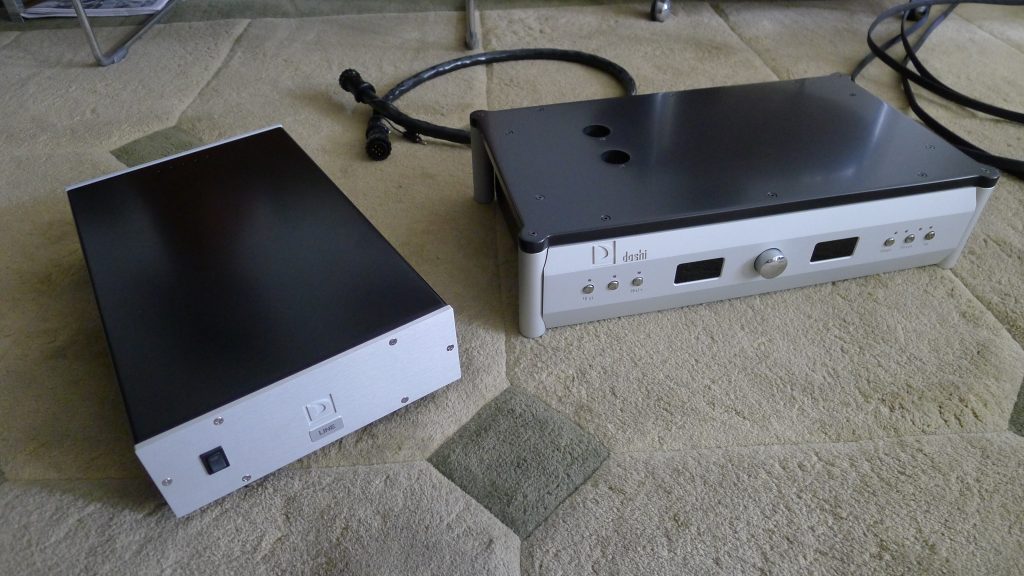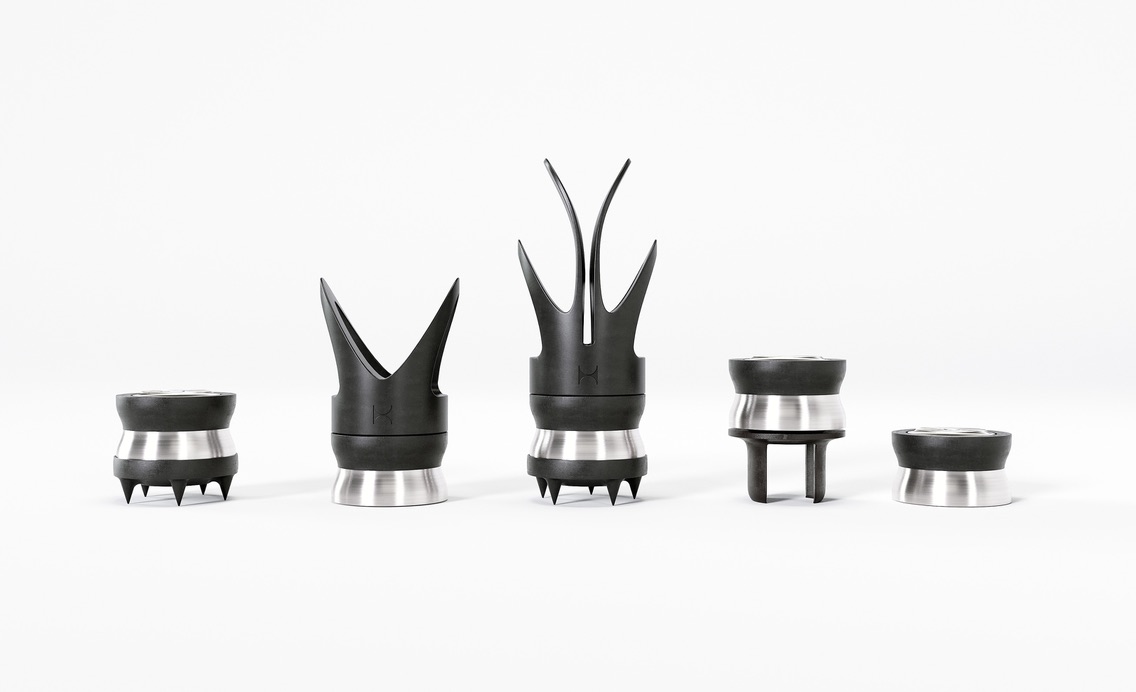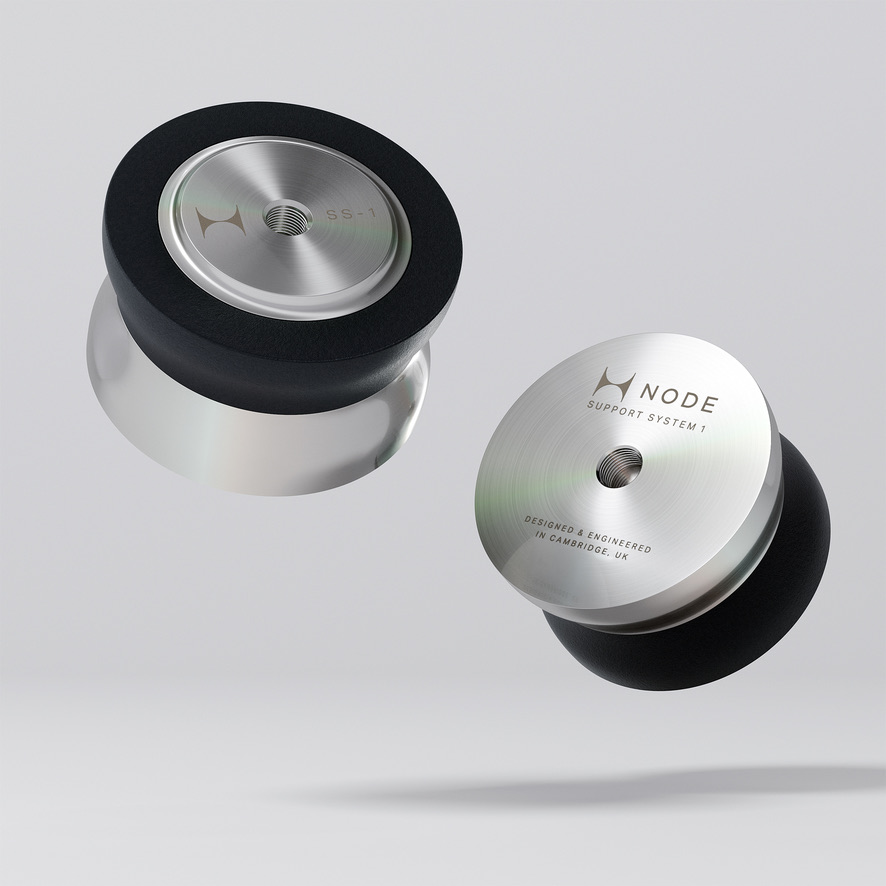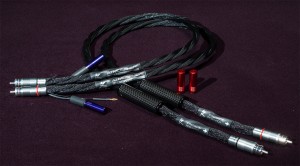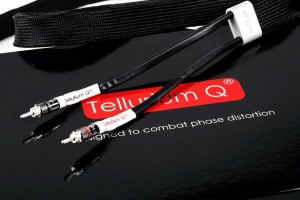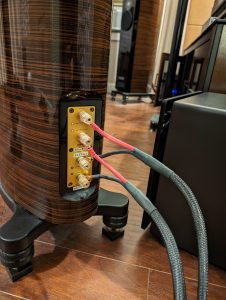The Age of Bulk
Occasionally I invite non-audiophile, classical music aficionados over to listen. I intentionally leave them unprepared for what they will see, except to mention that I'm an audiophile. It's a setup and it always works. They enter my living room and they freeze. After a pause, they point to the Kronos Sparta, the CH M1 monoblocks, or the YG Anat speakers. "What is that?" they want to know. My rig is full of machines they've never encountered in a domestic space.
But, it's the cables that really blow their minds. These days, cables are bulked up as if there's a furious heavyweight bout for the fattest, most unwieldy, big boy. Bigger must be better, right? Except the cynic in me can't help associating all the eye candy with the frequently startling price tags.
In any event, that's why I was caught off guard when the shipping box from Switzerland arrived. I had arranged with CH Precision to receive an entire suite of their Reference cables: two sets of speaker cable (for bi-amping) and three sets of balanced interconnects. I was anticipating a carton large enough to hold a small amplifier. Instead this compact, lightweight box was handed to me. My first thought was, "did the order fulfillment guys made a mistake?" But when I opened it and took inventory, everything was there.
The CH Press Rep emailed me, "Our cables are not about bling bling." I'll say.
IC and Speaker wire
Looking closely, Swiss design and build quality is evident but there's nothing particularly eye catching in their appearance. Superficially they don't seem very different from many other wire products, which makes you wonder about the pricing—$9800 for a 1m interconnect pair. But then, compared to the pricing for competing premium silver cables like Audio Note or Siltech, the CH Ref seems almost reasonable.
I suppose this review was inevitable, only a matter of time, as I've been so enamored with each piece of their gear that I acquired a complete system. But many people don't know they have two tiers of wire products: the mid-price line of copper conductor cables in black sheathing and the Reference series of pure silver conductors dressed in white, which I now have in house.
At this time, the Reference series has balanced and single-ended interconnects, speaker wire, and a phono link, but no power cord. One thing about these signal wires: all of them are unshielded. CH claims that keeps capacitance extremely low and bandwidth extremely high.
The astonishing low capacitance efficiently prevents any energy from being stored in the cable and injected back in the system. That leads to unprecedented clarity, not only heard in the bandwidth extension in the treble, but also in the solid bass foundation this cable provides.
the Reference Balanced Link
The Ref Balanced Link interconnect employs finely tuned and uniquely twisted pure silver conductor strands interlaced with damping cotton fibers. The cable is based on an array of conductors placed in a geometry optimized for low capacitance. The dielectric is mostly air supported by a fiber structure that also makes the cables less susceptible to the influence of vibrations.
CH designed the XLR connectors, while the conductor material and cable fabrication is sourced from Argento Audio. The large connectors have square corners and the XLR pins inside are also silver. Teflon is used for the non-conductive parts, and all is cast inside a non-magnetic metallic body.
The Ref Balanced IC is skinnier than my Kubala•Sosna Elation!, about the same diameter as TARA Labs The Muse. It is much more flexible than either.
the Ref RCA Link
The Ref RCA Link employs the same design principles and materials as the Ref Balanced. Once again, the RCA connectors are designed by CH; the conductor material and cable fabrication are sourced from Argento Audio.
the Reference Speaker Link
The Ref Speaker Link is flat and web-like, covered in a woven white sheath. Even more than the IC, it is understated—no aspect of its appearance calls attention to itself. It is thin, flexible, weighs next to nothing, and has separate runs for negative and positive. Again, the conductor material and cable fabrication is sourced from Argento Audio.
Both the electrical aspects (cable twisting as well as the number, shape and size of silver conductors) and the mechanical aspects (interlaced cotton fibers in between the silver strands for damping purposes) have been thoroughly analyzed to provide the best possible coupling between amplifiers and loudspeakers.
Silver is used everywhere: the wire strands inside the cable, the spades, even the solder linking the wire strands is a composite of 10% silver, 0.1% gold, with the balance tin. The 2mm thick spades are fairly rigid and don't deform as easily as pure silver spades tend to.
Scaling Mountain Tops
As sometimes happens, the cables from Switzerland arrived at the exact moment that the system had scaled another mountain peak. Through various adjustments too detailed to go into here (you can read about this in my CH T1 review, in The Visit section), I managed to attain higher altitude on several fronts.
In short, I tweaked my CH M1 monoblocks to reduce the treble and increase dynamics. I added a few more GIK Acoustics absorbers around the room to clarify the lower frequencies and the soundstage. What resulted was more fuel given to the power range and more fullness allotted the midrange. The low-end had punishing weight and slam, more than I've ever gotten, and there was so much body and heightened presence, it actually reminded me of a classic single-ended tube amp.
I was entranced and the feedback I got from others confirmed it. Only Lynn abstained from the cheering. She said it had gone too far: it was too big, too weighty, with too much presence. It dwelled in the land of hi-fi. Yes, of course, she was right. It was not the sound of unamplified acoustic instruments in a good hall, our holy grail. Still, I could not deny how it sucked me in and evoked such a positive emotional response in others. I'm still pondering the implications of all this.
I was using a mix of TARA Labs The Muse and K•S Elation! wires. I enjoyed this peak sound for no more than two weeks before the CH Ref wires came and replaced the whole lot of them.
the Sound of Silver
If you ask an audiophile, "What's the sound of silver?" he's likely to reply thin and bright. Most often they have an upper-midrange prominence. Silver wires in general sound sweet, with rich timbres that exhibit a little sheen in the treble. The noble metal is fast and clean, without excess bloom or lingering note trails, and a bit on the cool, composed side.
Less frequently you come across silver wires that are full-bodied with a balanced frequency spread. The CH Ref fits this latter profile.
the Sound of CH Ref Wires
Let's listen to the Shostakovich Symphony No. 5, a splendid Reference Recordings SACD (FR-724). Right from the moment I hit PLAY, the CH Ref have a different ear-feel. Panel mate Sheldon immediately (and gleefully) picked up on "the loveliness of the horns and woodwinds, simply delicious. The strings, so sweet…Only silver conductors can do that."
Yeah, they sure sound lovely. A big part of that is how silver reproduces harmonics. It sounds rich and complex, as if more layers of the harmonic structure are included. The CH Ref makes instruments sound more unique—and more true. It is easier than ever to distinguish among a clarinet, oboe, or flute.
And it sounds sweet. The layers that are added are overwhelmingly of the pleasant variety, tipping the ratio of consonant vs. dissonant overtones to the former.
Free and Open
The other piece of the loveliness is because these are unshielded cables. Designers use shielding to reduce the wire's susceptibility to airborne EMI/RFI. When you apply shielding the sound becomes quieter, more pure, with sharper focus and higher resolution. However, too much shielding results in over-control and a squashed treble.
Unshielded cable like the CH Ref, on the other hand, sounds free and open. The focus backs off; there is less spotlighting, more blending; the images become soft edged. It ain't the razor-like focus I had before, but location cues are unwavering leaving no ambiguity concerning placement on the stage. This is another reason why the treble is so delicious: bright and sparkly, but not harsh or rough. However, the softer focus causes some loss of edge texture.
The blending promotes wonderful coherency. You won't hear the treble as a naked, standalone frequency band. Everything comes out blended together as a mix. It's been years since I had an unshielded cable in house and these wires are among the most coherent and integrated I've come across.
A Word on Transients and Bass Slam
To get back to the Shostakovich Symphony No. 5, the second movement kicks off with punishing tutti passages that leave the percussion and bass sections straining. Trying to reproduce that at home is often humbling.
When the double basses begin pummeling you, the CH Ref rises to the challenge. Its deep-bass response is not shy and the range between upper-bass through lower-midrange is especially strong, even more so than my reference wires.
The only fault is the basses don't growl like they used to. Low frequencies are well represented, but kind of non-aggressive. The CH Ref doesn't have the same grip on the bottom due to: 1) the overall smoothness discussed above, 2) and the sloping attack of the transient. The CH Ref moves fast enough so it's not a problem, but the transient lands softly. I bet if you were to measure its curve, the graph would not be a right angle.
the Sound I had Before
This is not the presentation I had a couple of weeks ago, when I had everything audiophiles talk about, the complete package. Up close, direct, and extremely present—that was the perspective an engineer in a recording studio would have. It was stunning and I dug it mucho…
Until I was presented with the alternate view provided by the CH Ref. The CH Ref put me back in the audience—not first row but mid-hall, maybe row twelve. Quiet passages move you further back to row twenty. In any case, you always feel like you're in a hall. Yeah, classical music lovers are gonna fall hard for the convincing recreation of the concert experience.
TARA Labs The Muse XLR ICs
Going Back to what I had
About mid-way through this review, I swapped in a 2m run of TARA Labs The Muse interconnect to confirm my impressions. Edge definition and discrete imaging came back, along with bass grip. I suspect card-carrying audiophiles will prefer this sound. But I miss the consonant harmonics, the beauty of woodwinds and stringed instruments, and the flow of the musical line.
Component Swapping
Wanting to see how the Ref cables fared with other components, towards the end I swapped in the Doshi Audio Line Preamplifier V3.0 (review coming soon). This is a hybrid device with a pair of valves.
Doshi Audio Line Preamp
The Doshi inclines to the musical side. So do the CH wires. This caused a compounding effect that brought out the hybrid Doshi's tubey side. It was too warm, too soft, and the bottom needed to tighten up. I replaced the K•S Elation! power cord with a TARA Labs The Muse PC. Ah, yes, this was certainly more neutral.
But I wasn't done. I swapped out a CH Ref interconnect for a TARA Labs The Muse IC and the sound took another step in the direction of neutral—but possibly it was too locked-in now? I backed out The Muse IC.
Next I tried K•S Elation! interconnect. Yes! This was it. Fine tuning is par for the course.
Installation
I had been advised these were demo wires and would only need minimal burn-in. That was not how it played out in my rig.
After 25 hours I sat down to take notes. The CH Ref were rather like most people's impression of silver cable: sweet, musical—and bright. Where was the lower-midrange through upper-bass? I was worried at this point.
A week or two later, and another 75 hours of playtime, I turned the system on and surprise, surprise—the missing low-end appeared! I don't have to tell you how relieved I was. This was their true sound, what I've described above. Another thing: I was also told the CH Ref wires are not directional. That may be true when they are new, but after being used one way, stick with it. I promptly affixed some tape noting the signal flow.
Unshielded wires like the CH Ref are susceptible to picking up environmental EMI/RFI noise. Noise was never a factor, but I did notice quality deteriorated—it got thin and dry—when an IC was touching a power cord. With that in mind, I took special care to route the wires far away from power cords and components with big power supplies.
Conclusion
When the box of CH cables arrived, the system was at a high-water mark with the kind of sound audiophiles crave. Up close, direct, and extremely present, it was like what an engineer in a recording studio would hear. Nearly everyone loved it.
The CH Ref wires went in and quickly made me realize what I had before was an audiophile definition of good sound. The CH Ref put me back in the concert hall, even as it hit another high mark.
CH gear has sometimes been faulted for being dry and analytical. It can sound that way, especially if it's paired with ancillaries that share the same qualities. But then you can say the same of any gear voiced for neutrality. To get the best out of CH components, you need to seek out wires that tilt to the musical side with good body and well-represented lower frequencies.
The designers at CH Precision know this and that's exactly how they voiced their CH Ref line of wires. Finally, I'd like to note these wires possess that vaunted timbral fidelity that I like so much in their components. All owners of CH gear plus fans of silver cable should make it a point to audition the CH Ref wires.
Reference Speaker Link
Retail: $9800/m pair, additional meter $3600
Reference Balanced Link
Retail: $9800/m pair, additional meter $1800
CH Precision
Images courtesy of CH Precision




